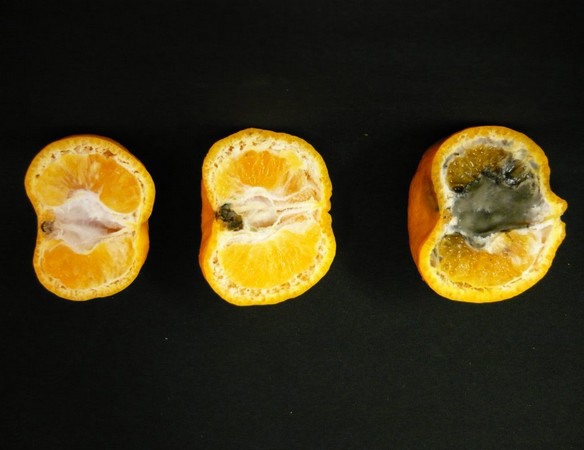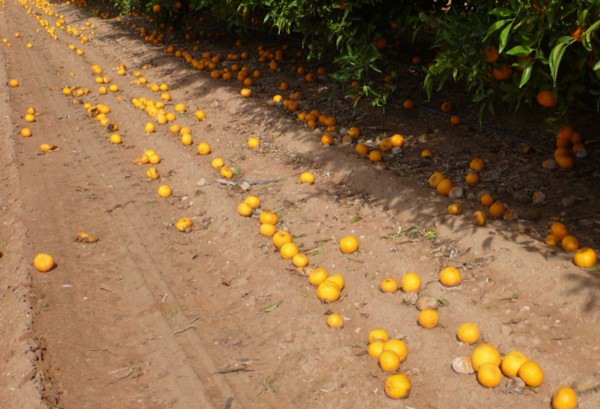What is the problem?
Consumers are caught by surprise when they tuck into a healthy piece of fruit but discover a black rotten mess inside (See fig 1). A new Hort Innovation project aims to shed some light on how this happens in the field so that we can learn how to better manage it.
Black core rot caused by the fungus Alternaria spp. can be a problem for some citrus growers in the southern growing areas in Australia with winter rainfall and cool winter temperatures, contrasting with hot dry summers. Fruit infected with Alternaria spp. can develop black core rot inside the fruit without showing any external symptoms (See Fig 1).
Spores of Alternaria are airborne and they are believed to enter citrus fruit through wounds or micro-cracks at the stylar end during early fruit development after petal fall. After infection of young fruit, the fungus establishes a dormant infection in the stylar end of the fruit.
The problem may not be detected until after harvest when the fruit reaches the consumer or the juicing plant. Besides the internal black rot, the fruit also develops a bitter flavour. In addition to turning the inside of the fruit black the disease can also give rise to early fruit drop resulting in yield loss (see Fig 2).
 Figure 1: Black core rot in mandarin.
Figure 1: Black core rot in mandarin.
What is the problem and impact from a grower’s perspective?
Application of fungicides is at present not giving consistent control and one way for growers to reduce the impact of the disease is to delay harvesting until most of the infected fruit have dropped.
Project leader Professor Andre Drenth explains: “Growers have to make a decision to apply fungicides before knowing that they will have the problem. If the decision is made to take a pro-active approach based on black core rot problems experienced in previous years in certain blocks, there is no solid base on which decisions concerning choice of product, timing and frequency of application can be made."
“The return on investment will only become evident after harvest and even then, the effectiveness of applied management strategies is hard to determine.”
What would help growers better control this disease?
The risk of losses due to black core rot would be reduced by knowing which environmental conditions and crop stage have the highest risk of infection for certain varieties and information on which products to apply and the timing of application.
What is this project investigating?
This project will start with a survey and interviews with growers and industry stakeholders to get a better handle on the occurrence and impact of black core rot in citrus and capture the effectiveness and limitations of current practices that are used and favoured among citrus growers for managing citrus black core rot.

Figure 2: Fallen fruit with Black core rot.
For more information: citrusaustralia.com.au










